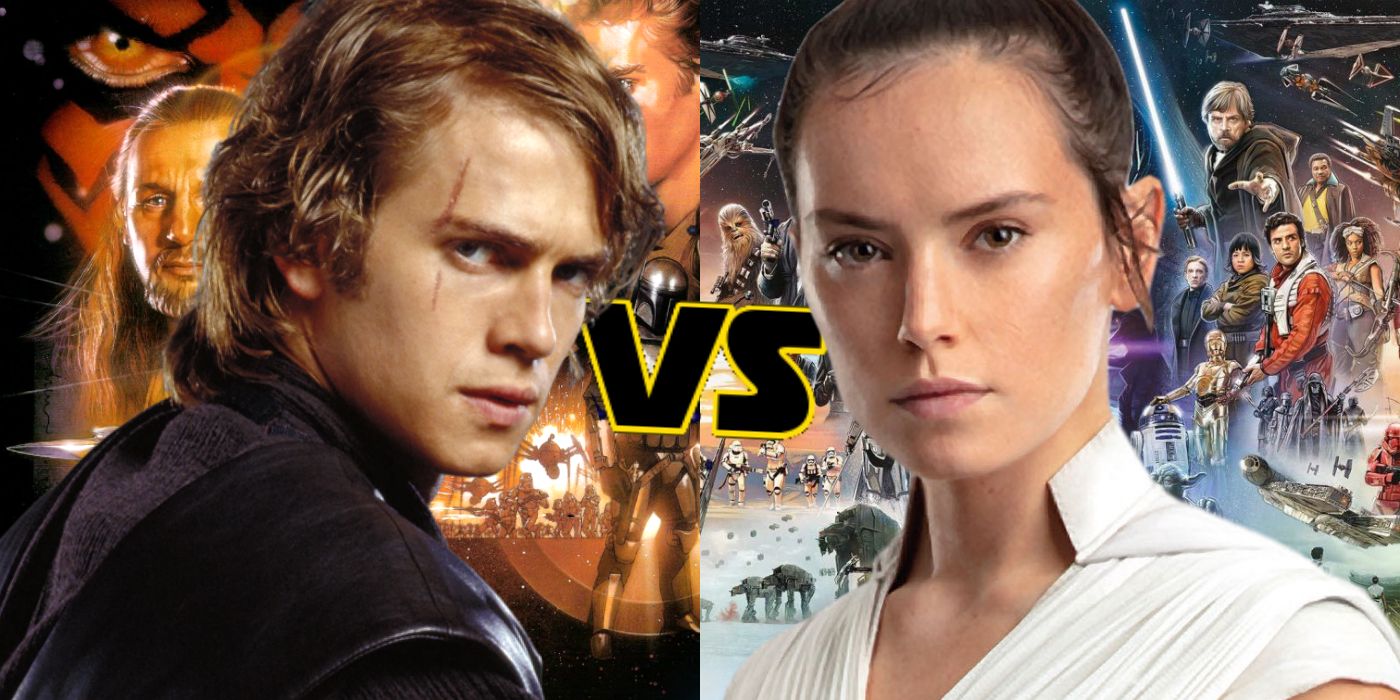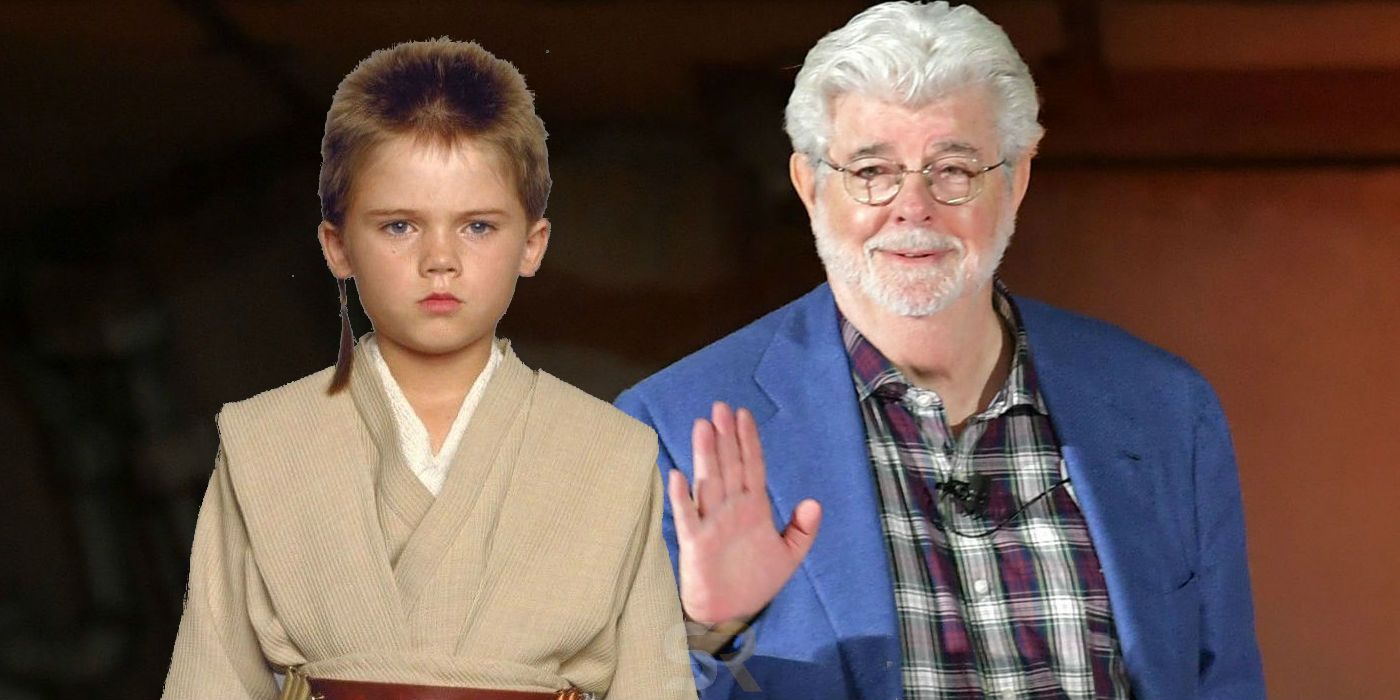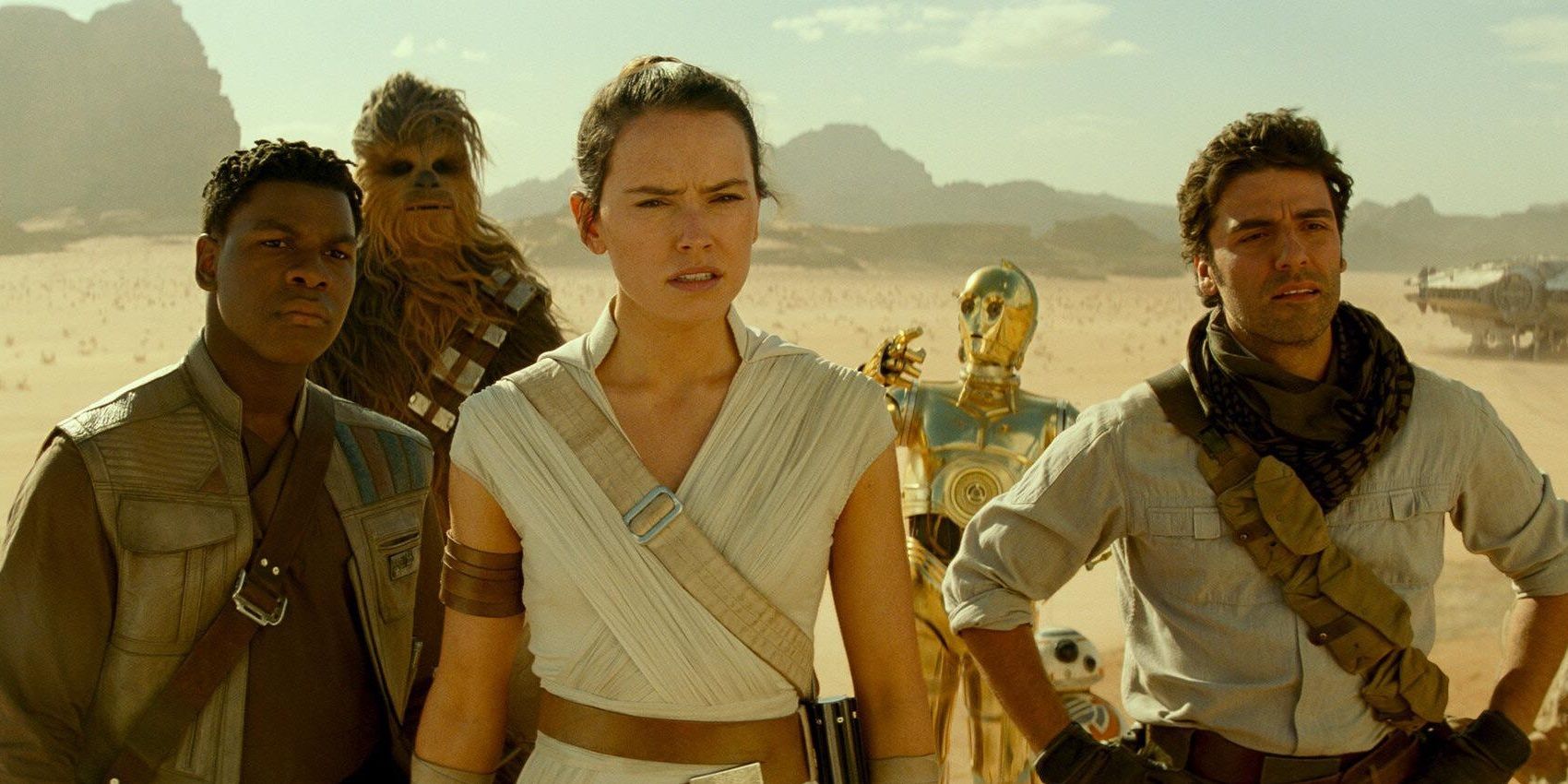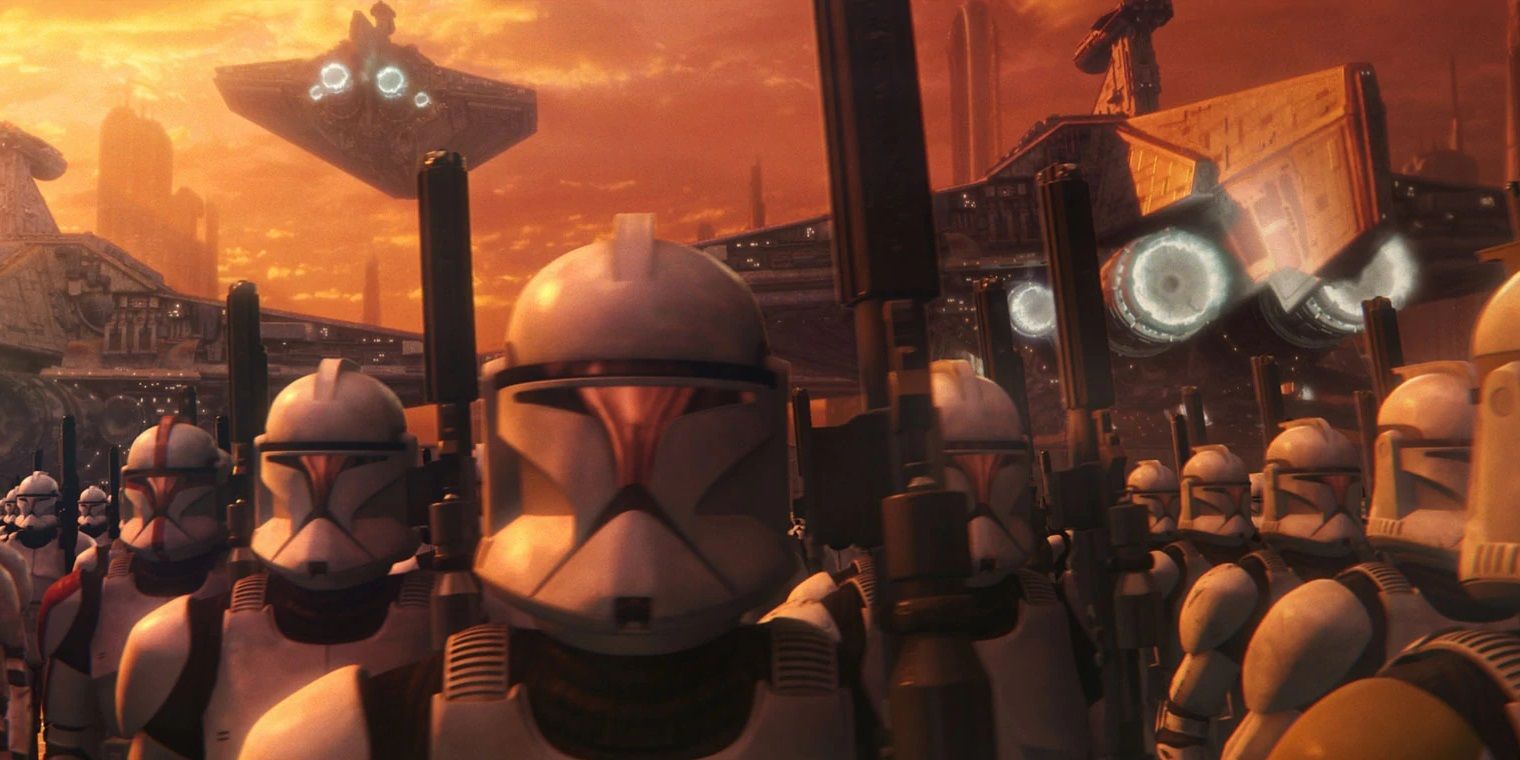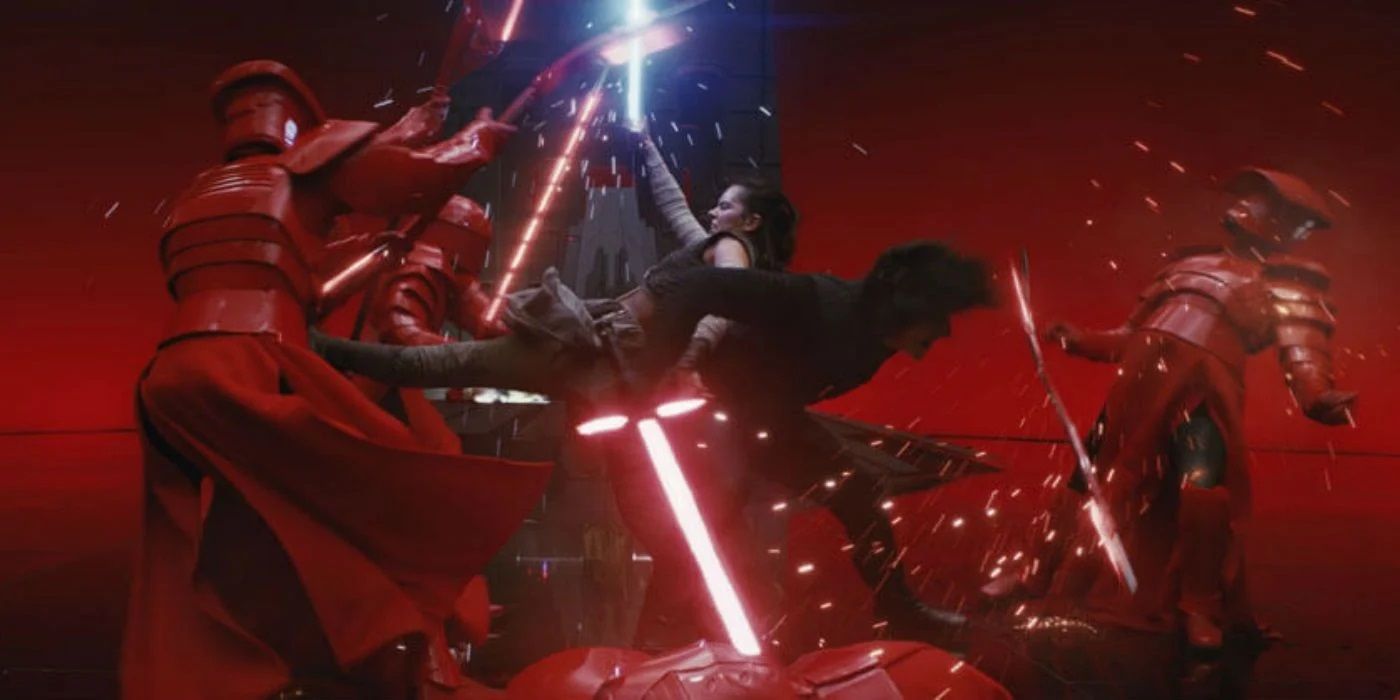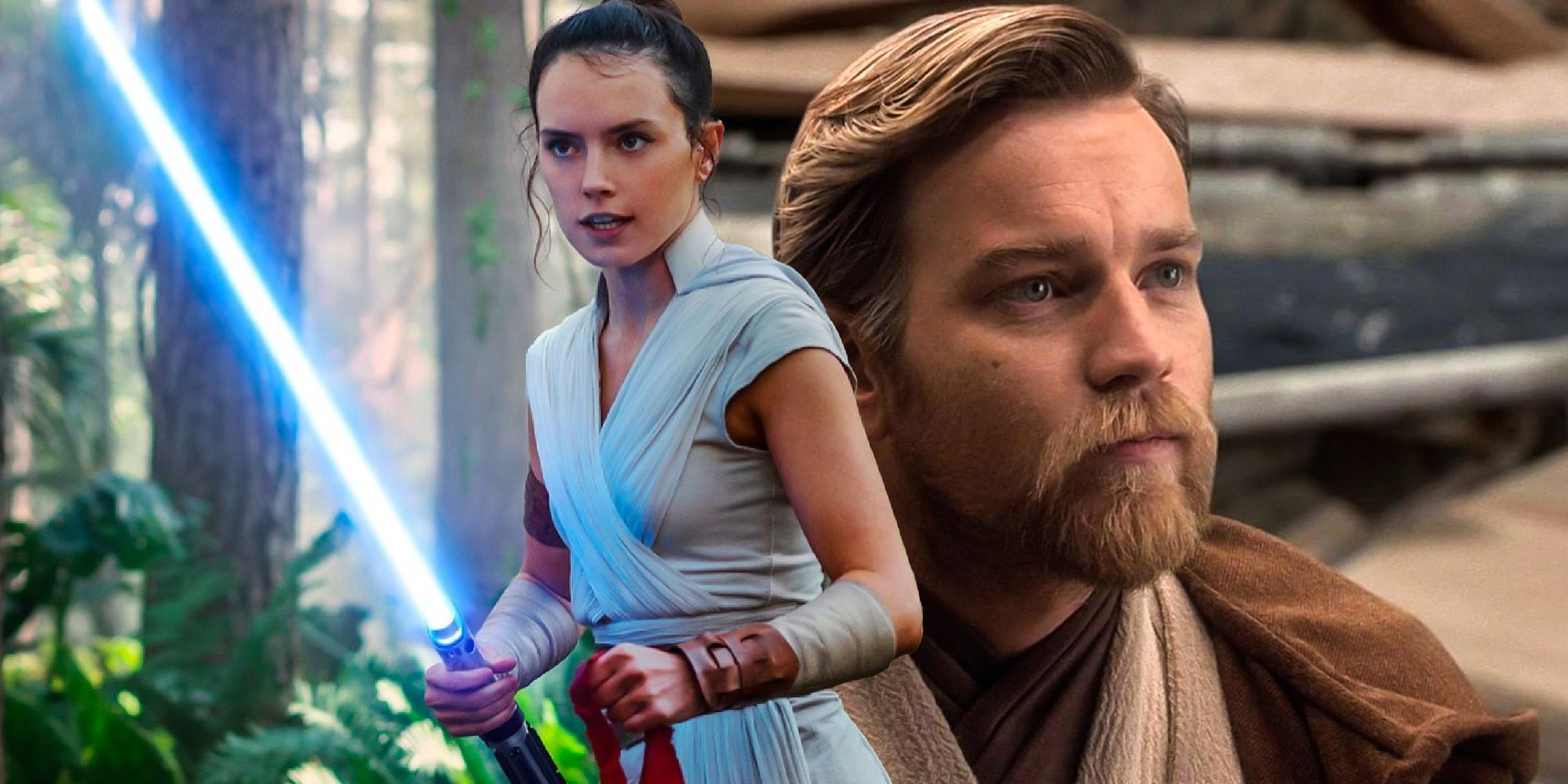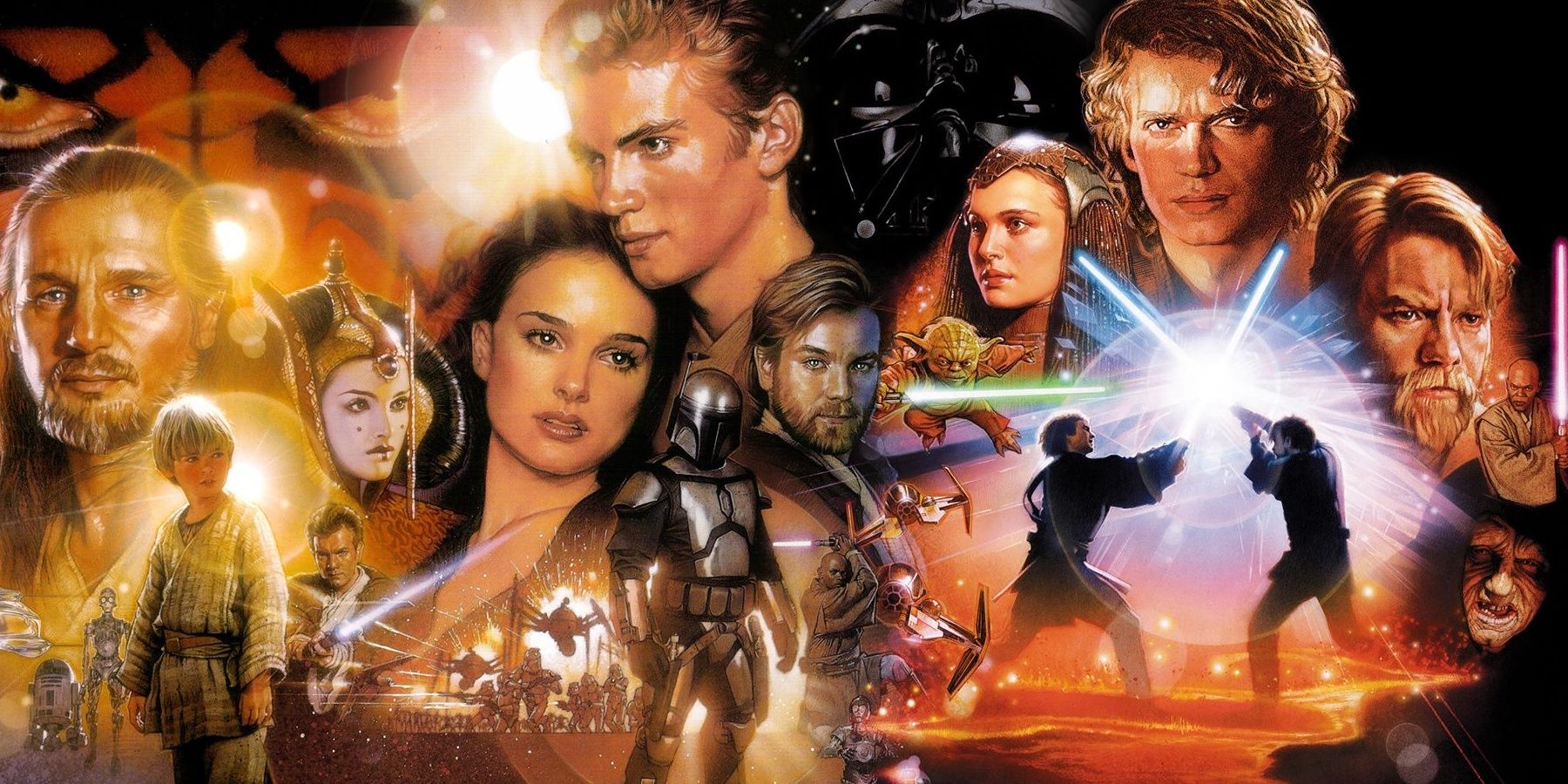Which Star Wars trilogy is better - the prequels or the sequels? The last 20 years have not been entirely kind to the Star Wars franchise. Although the franchise is bigger than ever, it has also become remarkably divisive. There have really been two major flashpoints; George Lucas' prequel trilogy, which launched in 1999 with Star Wars: Episode I - The Phantom Menace, and Disney's sequels, which kicked off with 2015's Star Wars: The Force Awakens.
For the prequel trilogy, part of the problem was that George Lucas's films simply weren't what audiences were expecting. He had always considered Star Wars to be a children's franchise, but the first people to turn up when the films released were adults who had fallen in love with Star Wars decades ago. When Disney acquired Lucasfilm back in 2012, they were determined to learn from Lucas' mistake, and consequently, they played the nostalgia card. With the benefit of hindsight, they over-corrected and unwittingly created a flawed trilogy as a result.
In truth, neither George Lucas' prequel trilogy nor Disney's sequel trilogy are perfect. Both stand in the shadow of the original trilogy, the three movies that turned Luke Skywalker and Darth Vader into household names. But which trilogy is better?
Star Wars Sequels vs. Prequels: Overarching Story
The prequel trilogy benefits from being the creation of a single visionary mind. Many of George Lucas' creative decisions were divisive, but he understood the story he was trying to tell, and there is a single narrative thread running through all three films. In Star Wars: Episode I - The Phantom Menace, the Jedi sense great fear inside Anakin's heart, and are initially reluctant to train him. In Star Wars: Episode II - Attack of the Clones, that fear turns to anger and he slaughters the Tuskens. And in Star Wars: Episode III - Revenge of the Sith, Anakin's journey into the dark side is complete, with his anger leading to hate - and ultimately to profound suffering. It is the exact progression Master Yoda warned Luke Skywalker about in The Empire Strikes Back, made manifest in the Chosen One.
The sequel trilogy, in contrast, suffers from the lack of a controlling vision. J.J. Abrams used his traditional "Mystery Box" approach with Star Wars: The Force Awakens, and it is now clear Lucasfilm had no idea what to do with his setup. They handed over to Rian Johnson, who counteracted the mystery box teases with unexpected subversion of audience expectations in Star Wars: The Last Jedi. The explosive reaction online led to a profound course-correction when Abrams returned for Star Wars: The Rise of Skywalker. As a result, the sequel trilogy feels like a narrative rollercoaster, with no real sense of consistency. Major plot elements come out of nowhere, most notably Palpatine's resurrection, with the resurrected Emperor retconned as the power behind the First Order's throne. It's just not at all satisfying.
Star Wars Sequels vs. Prequels: Main Characters & Performances
The prequel trilogy may have benefited from George Lucas' vision, but ironically its stars struggled to perform because they respected him too much. As tremendous a creative mind as Lucas may be, he doesn't excel at writing dialogue, and he isn't great at figuring out how to bring personal relationships on to the big screen. This wasn't too much of a problem with the original trilogy, where Harrison Ford and Carrie Fisher bucked his direction to shine through with their personality and sarcasm; but Lucas had become a legend by the time of the prequels, and nobody dared to do that. Even actors of the caliber of Ewan McGregor and Natalie Portman struggled to emote to Lucas' dialogue, and Hayden Christensen battled with infamous lines such as "I don't like sand." Still, the cast put up a fair performance, and by Star Wars: Episode III - Revenge of the Sith they were all comfortable enough with their roles to make the viewers really care about the final battle between Obi-Wan and Anakin.
The actors in the sequel trilogy faced other issues. Daisy Ridley and Adam Driver are at the heart of the story, and they did the best they could, with Driver, in particular, putting on a spirited performance in some scenes. But there was no consistent arc for the supporting cast, with John Boyega's Finn suffering particularly given he'd been marketed as a potential Jedi. It's little wonder Boyega has since made his frustrations with Lucasfilm public; he has absolutely no intention of ever returning to Star Wars, simply because it wasn't a pleasant experience for him. He likely isn't the only one.
Star Wars Sequels vs. Prequels: Production Values
George Lucas has always considered himself an experimental filmmaker, and with the prequel trilogy, he was determined to use ground-breaking CGI. It hasn't all aged well - many of the CGI aliens lack depth, and the Clone Troopers in particular suffer from the infamous "Uncanny Valley" effect - but it has to be noted Lucas really was at the cutting edge here. The experiments he took paved the way for successors who would deploy the technology far more effectively, most notably Peter Jackson's Lord of the Rings trilogy.
Ironically, the sequel trilogy itself - which seamlessly blends practical sets and CGI in some visually stunning scenes - builds on the foundation Lucas established. There can be no doubt the sequel trilogy looks much more beautiful than the prequels, but in truth that is a reflection of the state of modern technology rather than pushing the boundaries in the way Lucas did.
Star Wars Sequels vs. Prequels: Lightsaber Duels & Space Battles
Lightsaber duels in the original trilogy were slow and clunky, but by the time of the prequels the technology had advanced. Combat is fast-paced, and action sequences are tremendously well-choreographed. Unfortunately, that actually caused some problems, because on some occasions the actors are so focused on the choreography that they lose the ability to emote. In contrast - linking into the improved production values - the sequel trilogy generally gets the balance right. The highlight of the entire sequel trilogy is a scene in Star Wars: The Last Jedi, where Rey and Kylo Ren take on Supreme Leader Snoke's Praetorian Guards. Rey's fighting style has a savagery most unlike a Jedi, as she struggles to control the tide of emotions surging within her; in contrast Kylo Ren is laser-focused. The action mirrors the theme of the movie, with each of the two protagonists feeling the pull of the side of the Force they would prefer to deny.
The sequel trilogy is, however, generally lacking any really epic space battles - and sometimes the action breaks the "laws" of physics in Star Wars, most notably with Poe's inexplicable "lightspeed skipping" in Star Wars: The Rise of Skywalker. In contrast, the prequel trilogy has some tremendous scenes, including in the opening action sequence of Star Wars: Episode III - Revenge of the Sith. Curiously enough, though, one particular stand-out is a much smaller sequence in Star Wars: Episode II - Attack of the Clones, where Obi-Wan Kenobi pursues Jango Fett through an asteroid field. Jango actually weaponizes the asteroids against the Jedi Master, resulting in a cool action scene far more innovative than anything in the sequels.
Which Trilogy Feels More Like Star Wars
If we assume the original trilogy are the "Gold Standard" to define Star Wars, then the sequel trilogy is undeniably closer to its feeling. Ironically, though, that is a problem - one that has been expressed by George Lucas himself. Lucas was disappointed with Star Wars: The Force Awakens, critiquing it for its over-dependence on nostalgia. "There's nothing new," he complained. "There weren't enough visual or technical leaps forward." In Lucas' view, Disney and Lucasfilm had made something that appealed to nostalgia but lacked any cultural or technical significance in its own right, which was always at the core of films made under Lucas.
Their approach had been the very opposite of the one he took with the prequels, where he dared to attempt to redefine the saga, changing its focus and introducing new elements into the lore. By Lucas' standard, the very fact the sequels feel so similar in style to the original trilogy shows they were made in error. He clearly believes Star Wars should always be changing and expanding, rather than forever recalling its halcyon days in the 1970s and 1980s. Instead of telling new stories and expanding the way audiences feel about what Star Wars "is," the sequels merely replicated the way Star Wars makes audiences feel, which is more than enough for some, but clearly a source of division in retrospect.
Sequels vs. Prequels: Which Star Wars Trilogy Is Better
Both the prequel and sequel trilogies have been remarkably controversial, but for all their flaws the prequels make a better trilogy. This is largely because they at least have a single creative vision behind them, and they do not conduct elaborate and jarring course-corrections. Actors may not be able to perform to the best of their ability in light of clunky dialogue, but the character arcs are consistent and well-thought-through, ultimately resolved in tragic form. What's more, unlike the sequel trilogy, the prequels dared to attempt to redefine Star Wars - to tell a story that was fresh and new, even if it was set in a very familiar galaxy far, far away. They are to be commended for their boldness.

